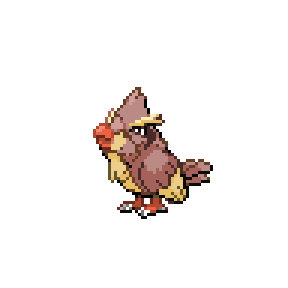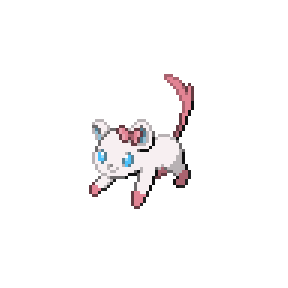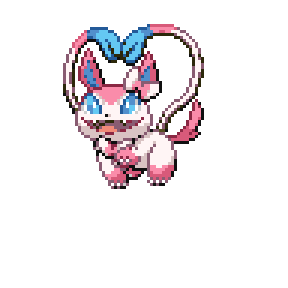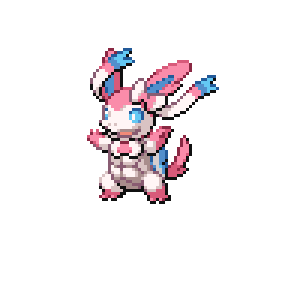43 pokedex entries by themadcactus
While Bulbasaur is known to walk slowly on land, Pidsaur uses its wings to fly around. These wings also help keep Pidsaur warm during the winter.

Wild Pidpie are frequently found on the outskirts of forests, having the advantage of both sticking to the sides of trees and flying across twigs.

Possessing no limbs, wild Pidpod rely on string to move large distances. The feathers inhibit it during rain or snow, giving little advantage.

This Pokémon makes its nests out of sticks and strings. Any Pokémon that tries to steal a Pidpod's eggs will end up stuck in a web.

Pidsaur's require more energy in their larger bodies, so they have developed sharper beaks and prioritize hunting on land than in the skies.

The wings are a vestigial structure, too small to support wild Pidsaur. Pidsaur have sharper beaks and keener eyes to seek prey on land.

The feathers of a wild Pidmander are completely immune to fire. Researchers found that the skin of the creature, while not flammable, can be burnt.

The long, wide beak easily allows this Pokémon to gather Berries from bushes with ease. It uses its tail to roast the gathered Berries.

When this bird Pokémon is seen flying on foggy mornings, it is said that its tail acts as a beacon for lost travelers, leading them towards shelter.

Wild Pidmeleon often molt their own feathers and use them for dens because they won't catch fire the way twigs do.

Having developed claws, this Pokémon will take Berries from bushes with their claws, peeling Berries with thicker skins before roasting them.

A Pidizard's wings cannot support it alone, but its lungs are constantly filled with hot air, making it lighter than it should be.

These Pokémon are known to occupy similar lands as Spearow. To defend against their fierce pecks, they simply use their shells as shields.

This Pokémon will try to calm any organism that approaches them with its ribbons and put it to sleep with spores from its back.

When threatened by Pidgey, Sylpie will use its cute charm to infatuate the predator.

Some believe this Pokémon is the descendent of a powerful bug-Pokémon, causing Sylpie to sell for a high price.

After evolving, this Pokémon will shed its skin. The most expensive makeup is made with its paste.

The peculiar structure of its ribbon-like wings, while seemingly impractical for flight, lets Sylfree glide freely on wayward fairy winds.

The intricately patterned wings are Sylfree's most distinct feature, with their bright pattern attracting unsuspecting Pokémon.

The legs of this Pokémon are blue only due to a certain toxin. The poison in the legs are extremely volatile, and can even paralyze an Ursaring.

This Pokémon uses all its energy in the process of metamorphosis. It defends by warding off any Pokémon with a quick whip of it's ribbons.

If you encounter one of these Pokémon, stay calm. Wild Syldrill detect fear, and will attempt to calm you down by injecting you with poison.

The bright colors of this Pokémon leads many researchers to wonder it's advantage. Many believe that brighter Sylgey are considered better mates.

Most Sylotto have 5 tails ribbons, but some have 6 or 7. The more tail ribbons that a Sylotto has, the more likely it is to find a mate.

While some Pokémon may look for mates, Sylgeot are indifferent. Considered stoic, owners of this Pokémon are viewed as wise and accepting.

When placed in the same biome as a Rattata, its quickly picked on. But when put in a snowy biome its fur keeps it warm and its color camouflages it.

Wild Sylsaur are extremely skittish, but they're very friendly to their Trainer. It is said that if one approaches you, you are a truly kind soul.

Without a seed on its back, many wonder where the poison comes from. One theory says it comes from the ribbons; another says it comes from the fur.

The bud on its back is tied in a neat bow. It is said that if it lies in the sun, the bow will grow and untie into two more ribbons.

This Pokémon lives by lakes and rivers where other Pokémon go to drink. They keep the peace and stop any Pokémon from fighting.

Sylsaur has become known for its habit of bathing in the sun.

When Trainers see this Pokémon's floppy ears in the wild, they cannot help but pet it.

The fire on a Sylmeleon's tail emits no heat. If you cook a Berry with their fiery breath, the Berry acquires a cotton candy flavor.

Due to this Pokémon's bright colors and size, they rely on speed when hunting.

Wild Sylizard use their large ears to hear any prey miles away. When mating, larger ears are seen as more admirable.

This Pokémon catches its prey with its ribbons and claws. When around an Eeveelution or Eevee, its demeanor becomes much more playful.

Its large ribbon wings don't give this Pokémon the ability to fly. Instead, it uses the move Fairy Wind to lift it above the clouds.

Like Mantine and Remoraid, Syltle attracts Magikarp and Goldeen when swimming down rivers.

Its ribbons act as tentacles, useful for swimming and hunting. When they aren't being used, they float freely.

This Pokémon swims against the stream. It still attracts many Water-type Pokémon while swimming, but only the strongest swimmers can keep up.

The large stone it has for a tail acts as a tanning machine and a light source. When a Sylbro isn't sunbathing, it's resting beneath its shiny tail.

This incredible swimmer beats pros without a sweat and paces with the fastest Water types. Despite this, it has a demeanor similar to that of Lapras.

At first glance, its ears may look misshapen, but they are actually very hydrodynamic.
